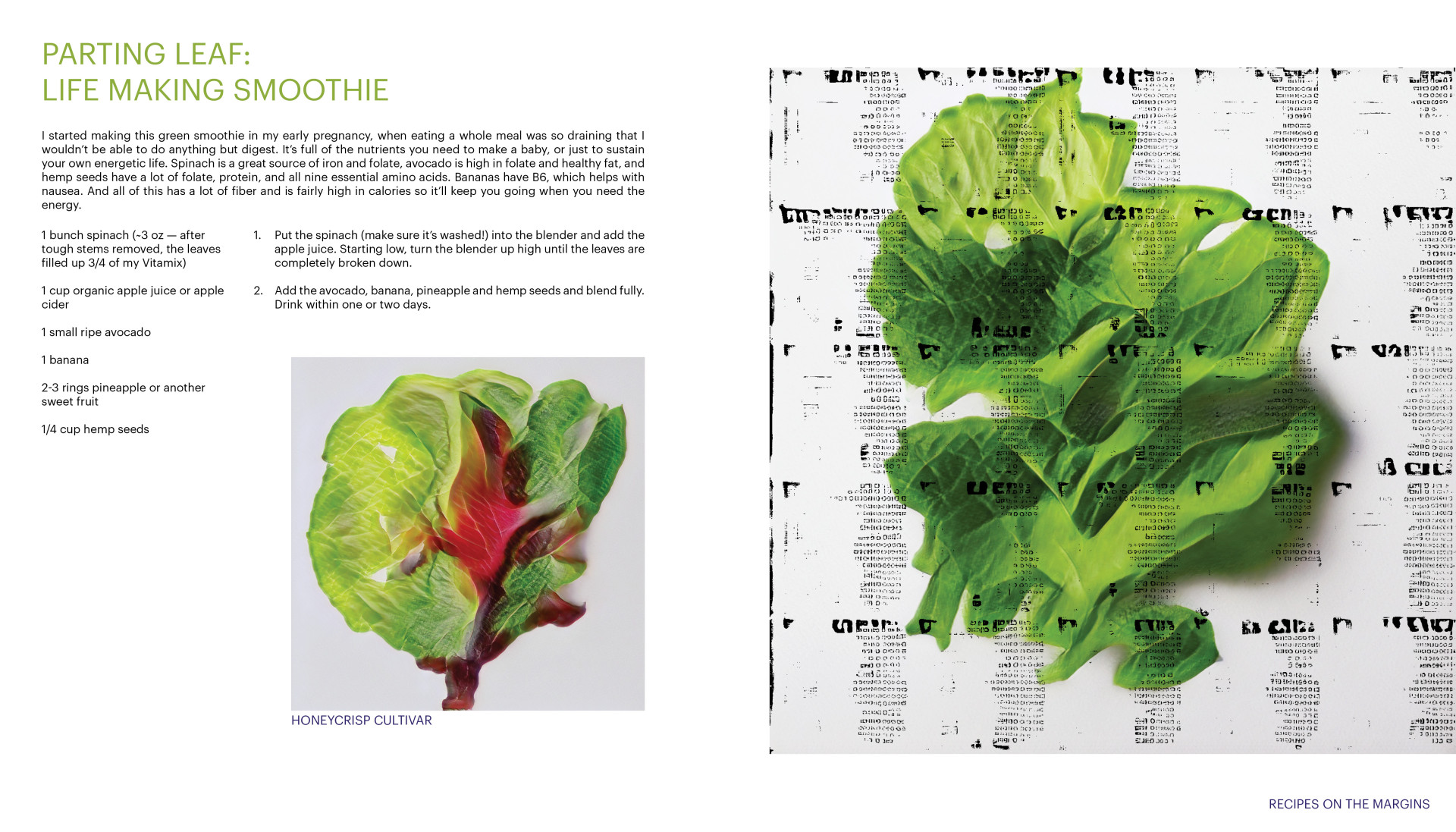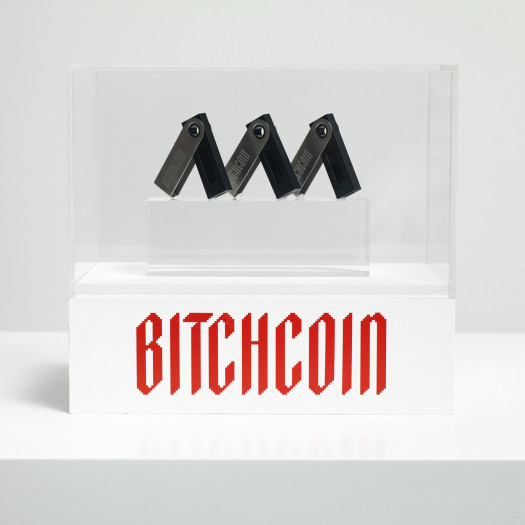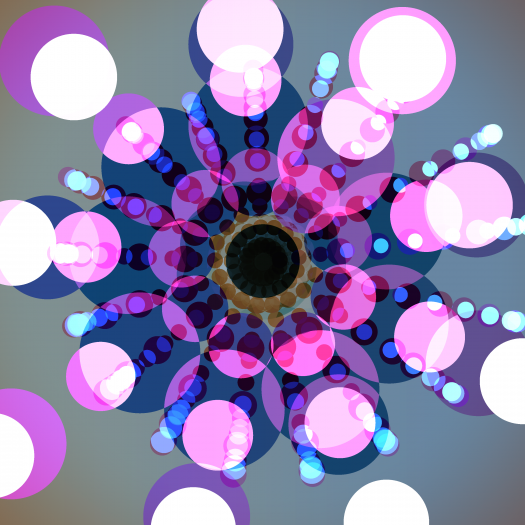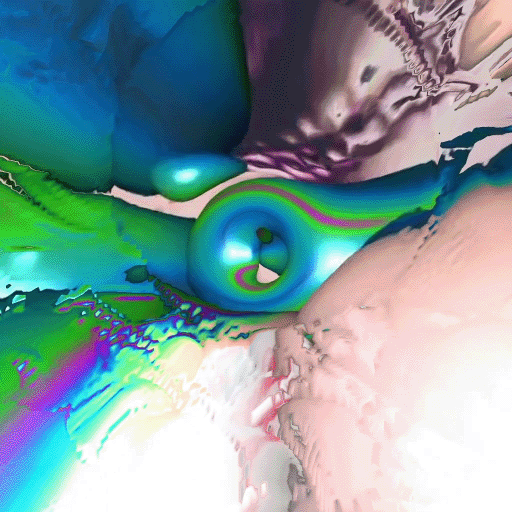Criticism
A Hungry Mind
by Emily McDermottThe machine learning models used in Helena Sarin’s art are perhaps best understood as metaphors for the workings of her own curious creative intelligence.
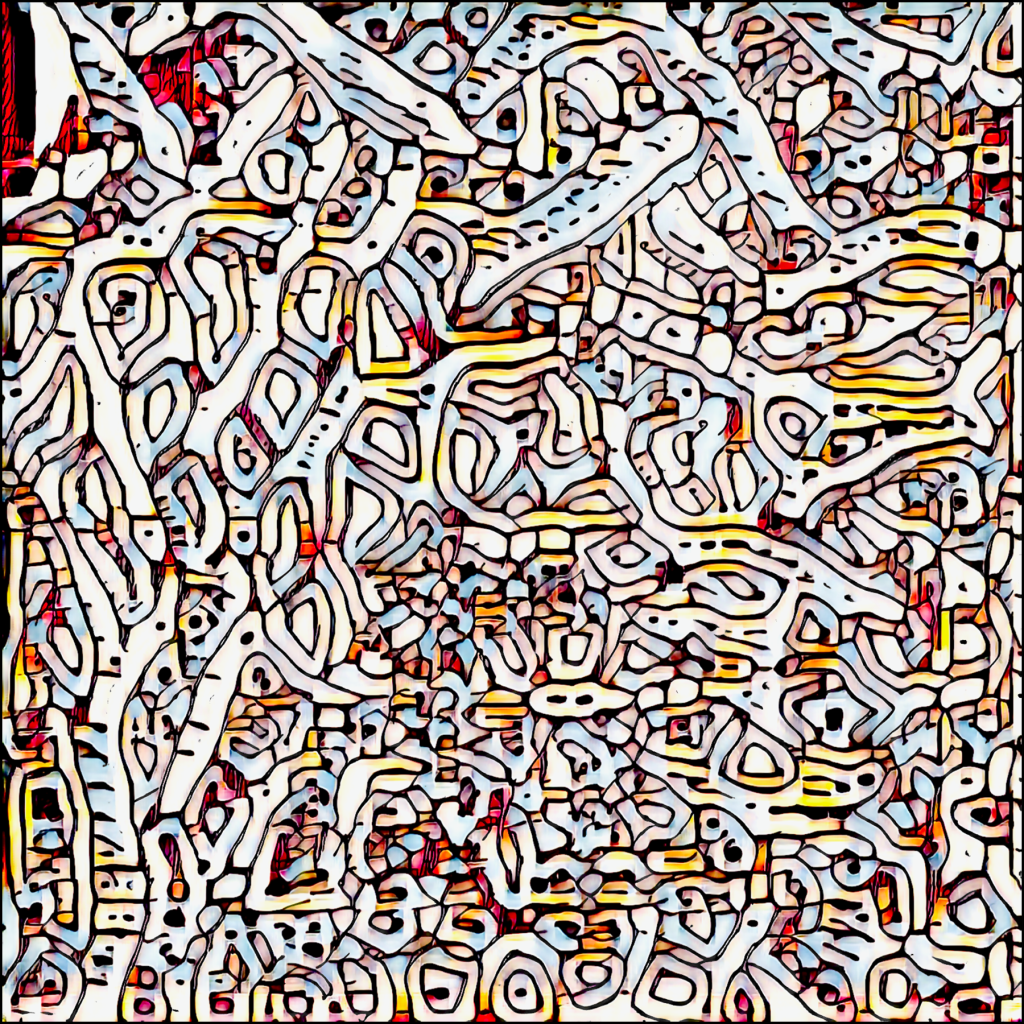
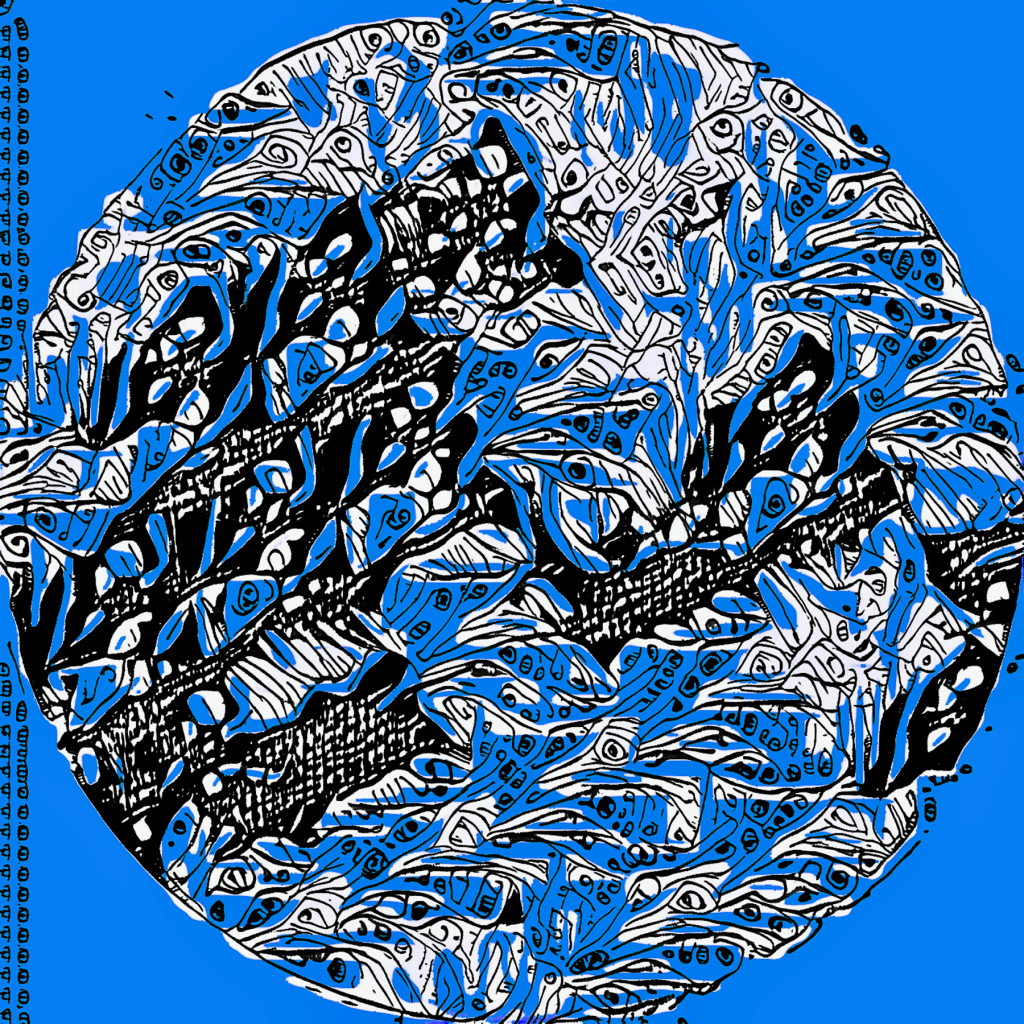
Helena Sarin’s practice is not one that can be simply categorized; she paints, draws, makes photographs and books, and works with clay. She also renders 3D images, codes, and builds and trains her own artificial intelligence models. Equally wide-ranging as her skill set is her subject matter, which encompasses everything from plant and vegetable still lifes to fashion design to figuration to pure abstraction. “It’s not about having your own style,” she told me. “It’s about having your niche.” Sarin’s niche is using her handmade art to train AI models to create digital images—and then bringing those back into physical space.
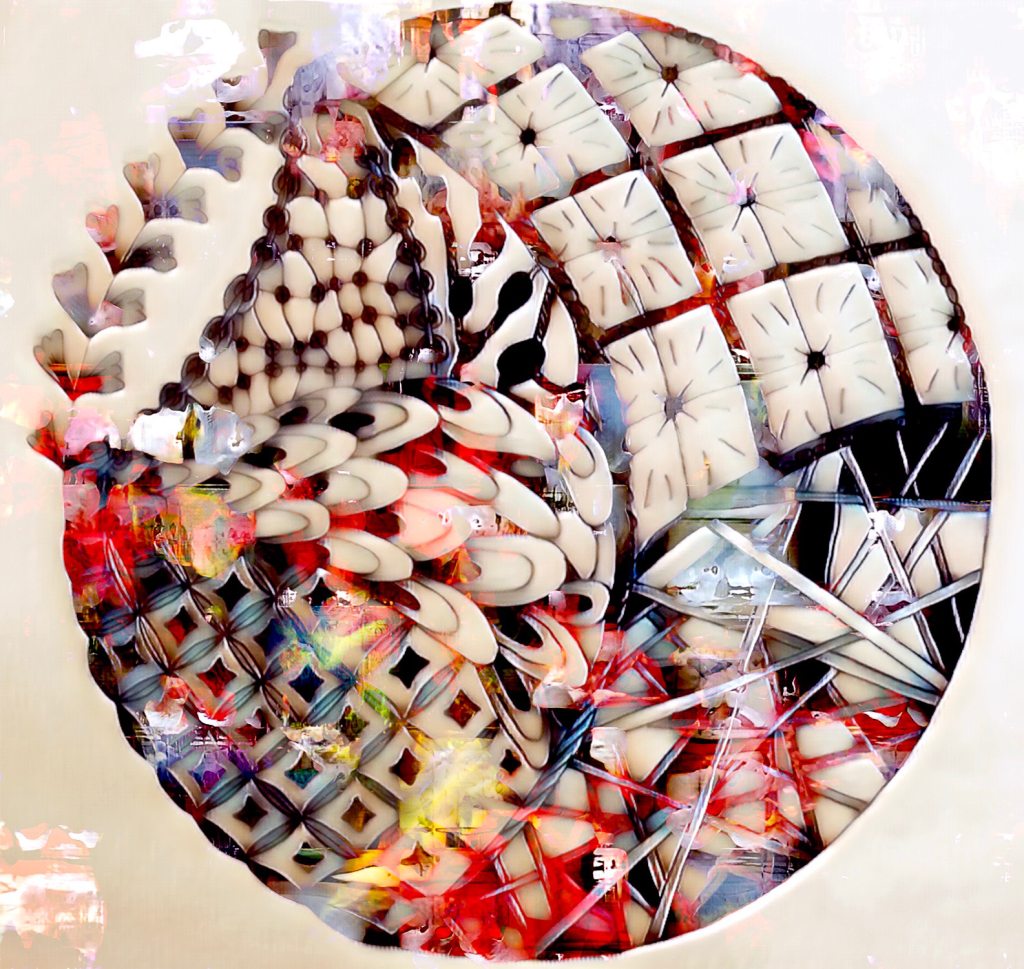
Sarin became well-known in early 2019 for her radical use of generative adversarial networks (GANs), a class of machine learning. Unlike many of her peers, the Moscow-born, New Jersey-based artist didn’t scrape the web for data sets. Neither did she use pre-trained models. To make her very first “GANified” image, as she likes to call them, An Eternal Tangle of What Ifs (2018), she trained two AI models—the minimum for any GAN—on more than two thousand of her own photographs and watercolors. Adopting art terminology, one model acted as Sarin’s apprentice, and the other as a critic. The apprentice tried to mimic Sarin’s aesthetics and then presented its copies to the critic, whose job was to determine if they were replicas or originals. If the critic could tell an image was a copy, the apprentice tried again. On repeat, the models began to “build their own views, their own hallucinations,” Sarin said, based on what they had learned from her original images. And Sarin became captivated with them: every hallucination was full of latent pictorial potential. For An Eternal Tangle of What Ifs, the result is a swirling kaleidoscopic image. Shapes that look like warped, white Cheez-Its float above a cosmic background on the upper right side; what could be bifurcated pieces of licorice allsorts swim among a glitchy layer of iridescence in the bottom left. Forms are at once alien and familiar, figments rooted in reality but extending far beyond.
As Sarin continued using GANs, she began pipelining three, four, five models on top of each other, instead of just two, to create even more complex experimentations and works. Then, much like any photographer working traditionally with their medium, she printed the results. In 2019 these fine-art prints were featured in a number of AI-focused exhibitions, including at the Women in Data Science conference in Zurich, at the fair CADAF in Miami, and at the Jam Factory in Oxford. Sarin’s prints also formed the foundations of her first book, The Books of GANesis: Divine Comedy in Tangled Representations (2019). With its obvious pun on the biblical book of creation, the sold-out limited-edition publication tells a fictionalized, coded story of the birth of GANs and the artist’s interest therewith. She writes that as GANs were becoming more mainstream and the models ever bigger, thus producing more natural-looking results, “I stayed behind the cutting edge in favor of letting my small models free roam in the latent space of my own imagery.” But little did she know how prescient this sentence would seem in the years to come.
Forms are at once alien and familiar, figments rooted in reality but extending far beyond.
When Sarin started working with GANs, the models and software capabilities were all so small that although the resulting images bore similarities to the original data sets, they always retained an uncanny quality. Today, however, the models can be so big and software so advanced that the results become closer and closer to the originals, until they appear exactly the same—witness, for example, the evolution of the realness of deep fakes, or the clarity of images made with newer programs like DALL-E or Midjourney. For a while, GANs fascinated Sarin, but soon enough, “everybody got on this bandwagon.” “What started afterwards was post-GANism,” she said, “and I got tired of it.” So she started experimenting with new formats, repurposing her older GANified images in different ways instead of creating new ones.
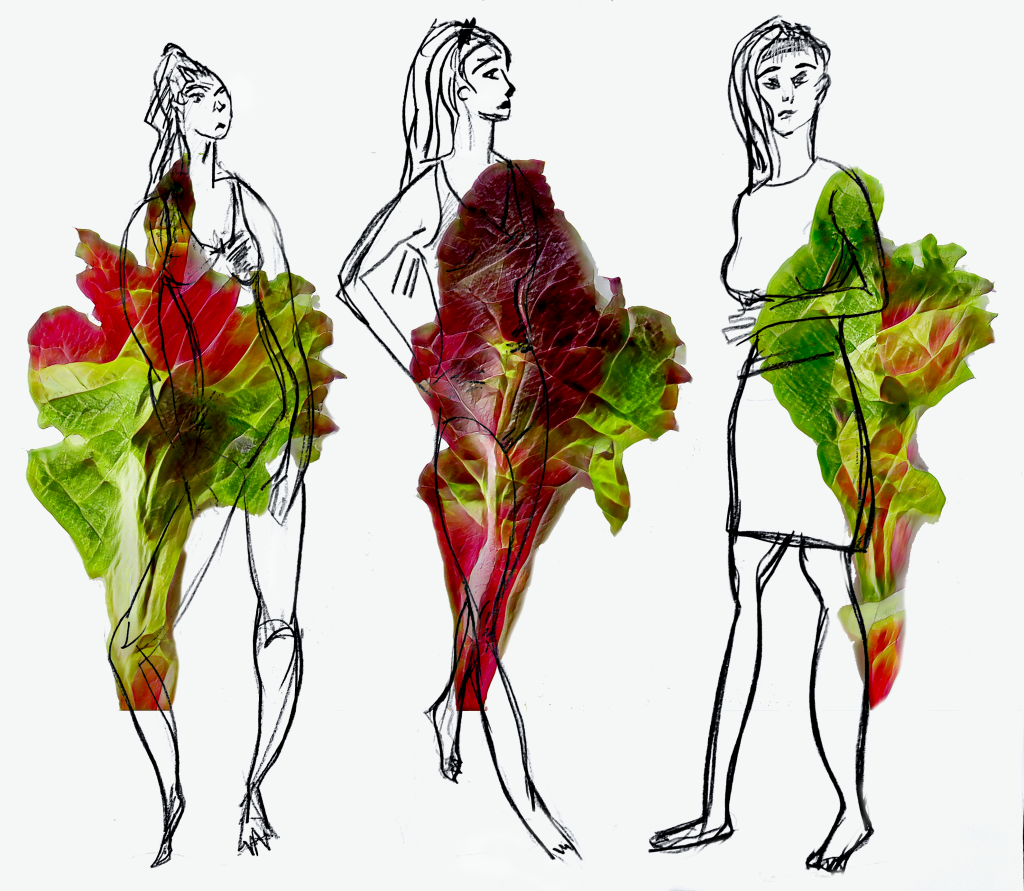
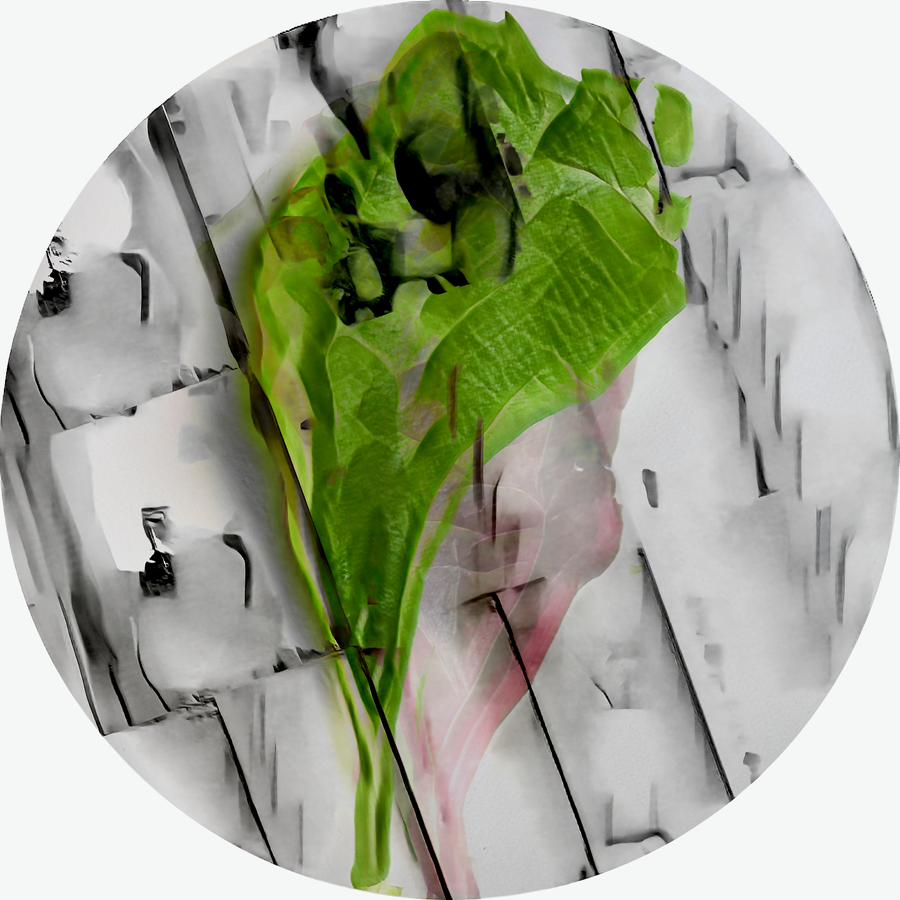
Over the last two years, Sarin began dropping NFTs. She admitted that the endeavor began as a financial decision: “I didn’t ever imagine my GAN art being exhibited digitally. Maybe through Instagram, but I never saw the digital as the end result.” She had quit her day job as a developer just before the pandemic, so when the speaking engagements upon which she relied for income were canceled due to lockdowns and Swiss gallerist Kate Vass suggested NFTs, Sarin decided to give them a go. She minted her first NFT in May 2020. Ever since, her works have consistently appeared as NFTs on platforms like Foundation and SuperRare, with her latest drop—54 GAN “latentDoodles”—selling out immediately. But the pieces that are minted on the blockchain haven’t necessarily appeared as prints, and she even mints unaltered photographs of her analog watercolors and drawings as NFTs. A photo of a watercolor she painted after Matisse’s The Blue Nude (1907), for example, is her most financially successful NFT to date (it was, however, stolen, she noted, surprisingly without self-pity).
This year, Sarin also released The Book of veGAN, an experimental cookbook grounded in some of her most compelling GANified images: those of food. For years, Sarin was heavily involved in her local food scene and moonlighted as a food photographer. Her aesthetic appreciation of the subject is palpable in countless photographs that have served as training sets for many models over the years—the series of “Latenttuces” (2020–21) is particularly worth highlighting. Sarin trained a pipeline of GANs on photographs of countless lettuces—radicchio, oak leaf, endive, romaine, iceberg, etc.—taken over the course of four days. Some worked better than others: “Radicchios were exquisite,” she said, while “romaine heart leaves were so boring and pale.” The results are simple and stunning, and in The Book of veGAN, they’re paired with vegan recipes created by chef Kate Ray in response to the artworks. A recipe for a healthful green smoothie appears above an image that looks like a flattened and glossed-over head of oak leaf, or a newly bred hybrid consisting of iceberg, romaine, and gleaming, still-wet, thick red algae. On the opposite page is another strange lettuce—featuring perhaps the textures of kale and little gem with a malformed shape that lands somewhere between a leaf and a head—overlaid, as if screen-printed, with indefinable yet somehow recognizable inky black symbols.
Sarin’s work is completely original, yet simultaneously informed by art-historical references, alongside the mined depths of GitHub and her own archive.
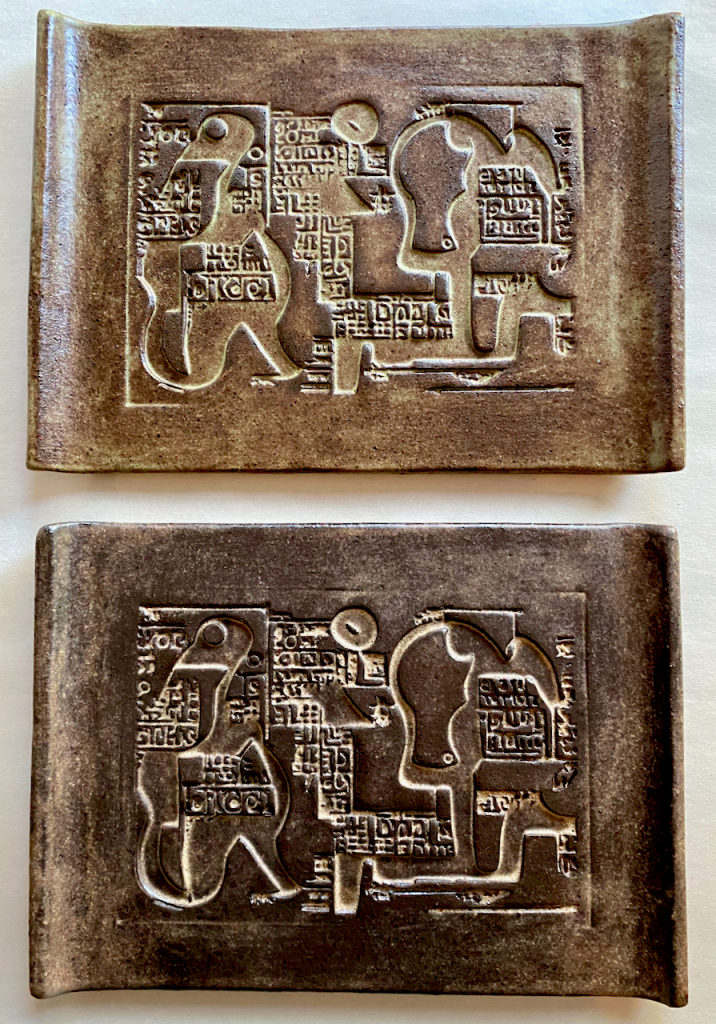
And the artist’s latest effort is yet another way of putting her GAN imagery to use within the three-dimensional world—this time with pottery. Sarin’s Twitter feed is currently filled with immaculate images of mugs, vases, and other vessels featuring designs inspired by myriad sources: driftwood, cats, works by Picasso. While these images are rendered by AI models trained on existing data sets from the web, sprinkled among them are more ad hoc photos of Sarin making her own ceramics with designs inspired by her GANified images. To make these pieces, she first selects a GAN image from her archive and then works with it in Blender to develop a design suitable for 3D printing. Using a set-up in her garage, she prints a plastic prototype from which she creates a plaster mold and either uses the technique of slip casting or presses clay directly into the mold to make the final form. “I don’t want to hide that it’s done with technology,” she said, but “I don’t want it to be too wonky with fingerprints.” In essence, this process, like most of her practice, conflates digital media and physical space, rejecting the notion that one is separated from the other. Borrowing a term coined by James Bridle to describe this crossover, Sarin calls it “the New Aesthetic of pottery.”
The way Sarin does everything herself and so deftly moves from one medium to another, from the physical to the digital and back again, is an honest reflection of her upbringing. “Growing up in Russia, if you wanted something, you had to do something. You didn’t buy stuff; you made stuff,” she said. “It’s so ingrained in me that this is how I am to make my art.” No matter how much training might be required, she believes in independent artmaking and in following one’s whims. “Being so prolific, so all over the place, and so eclectic might hurt my bottom line, but so be it,” she said.
Sarin’s practice is exemplary of the New Aesthetic applied to almost every traditional analog medium in existence, as well as to existing digital tools and eventually, presumably, to those yet unknown (it should be noted that Bridle coined the term in 2012, yet its principles remain as relevant as ever, despite the evolution of technologies and the resulting visuals). The resulting work is physical and digital, it’s both woman- and AI-made. It’s completely original, yet simultaneously informed by art-historical references spanning from constructivism to impressionism, alongside the mined depths of GitHub and her own archive. Perhaps Sarin’s practice is best summated as she refers to it herself: as an act of neural bricolage, with all the wordplay that might entail.
Emily McDermott is a writer and editor based in Berlin.
